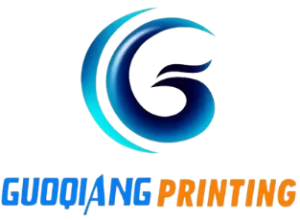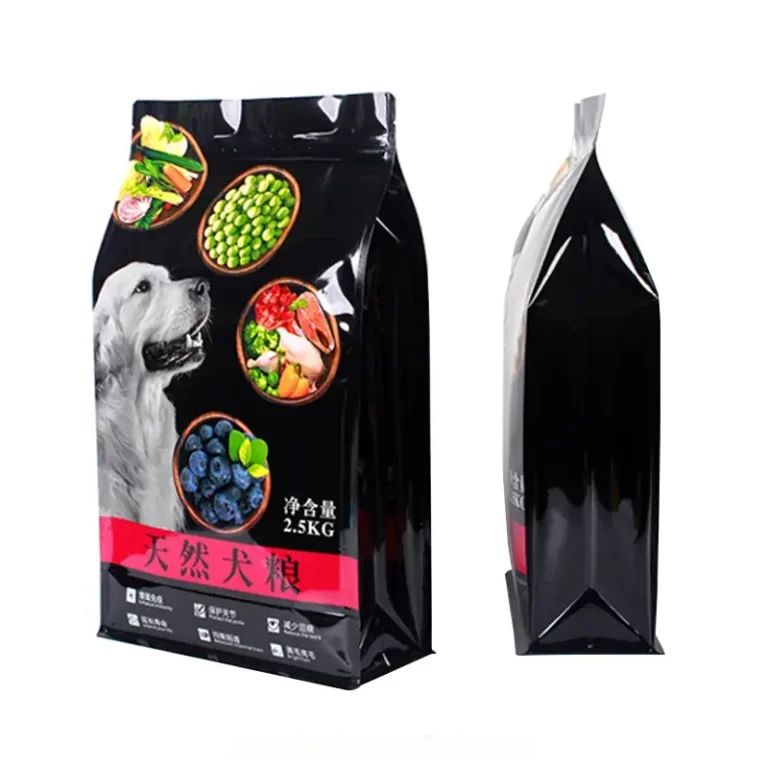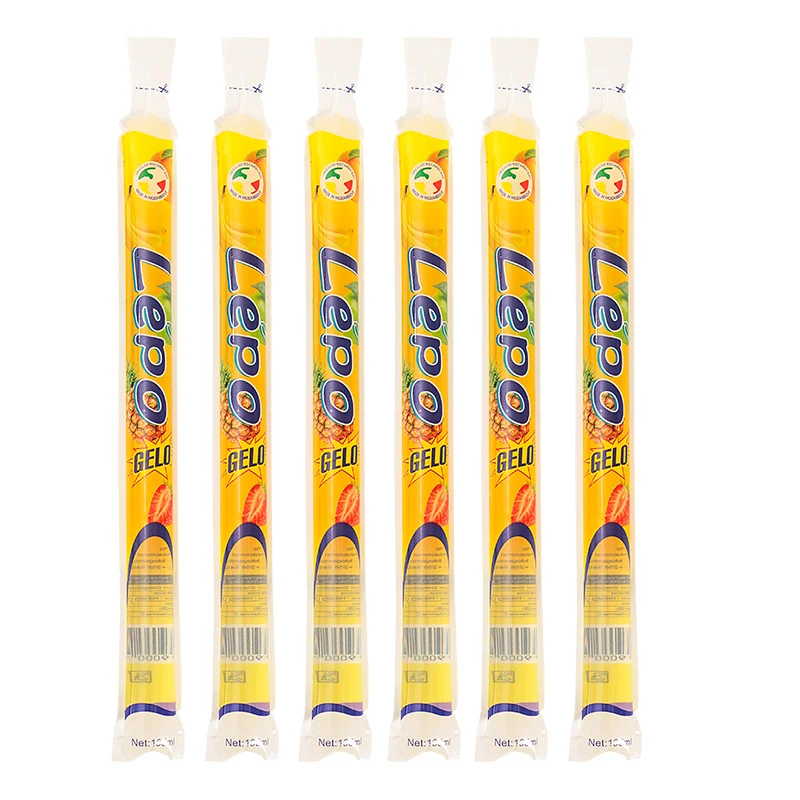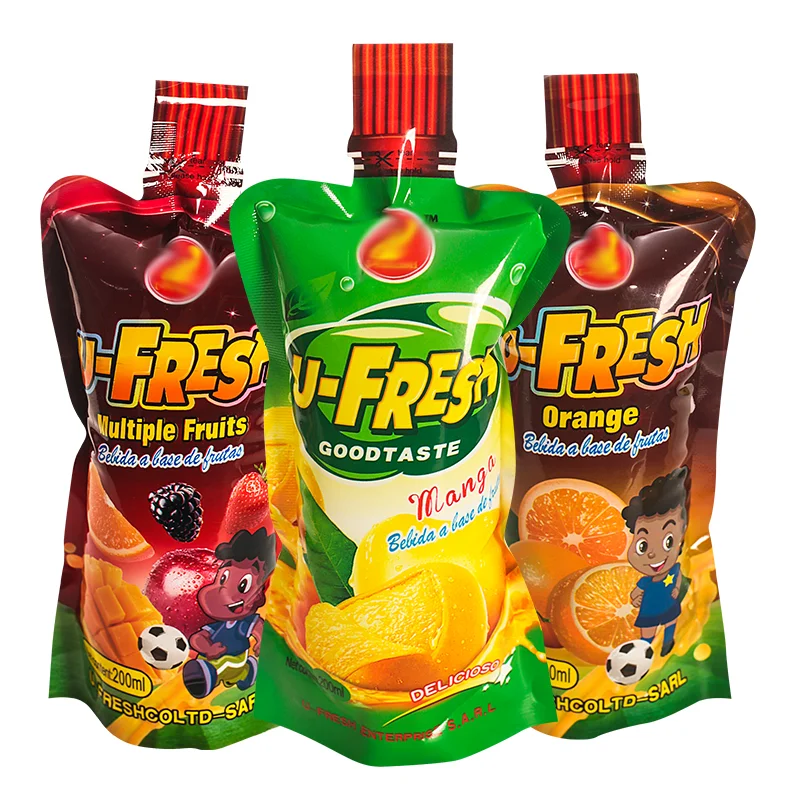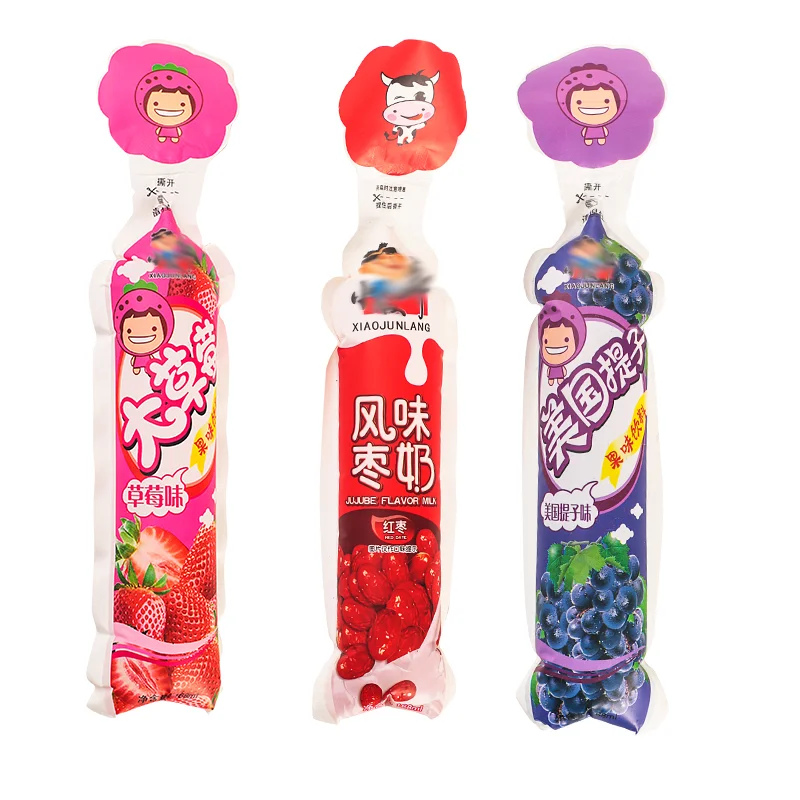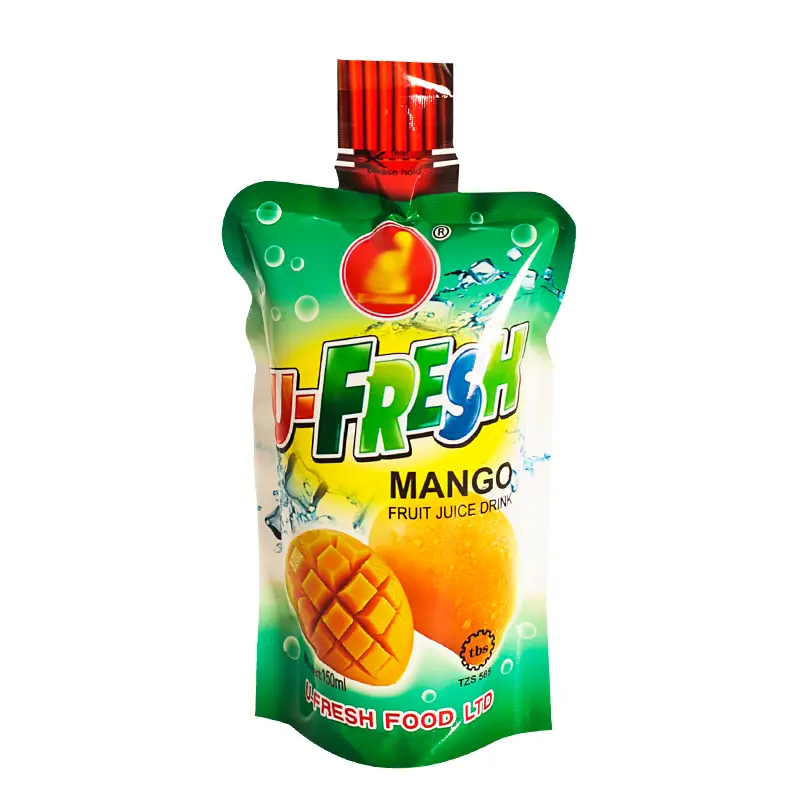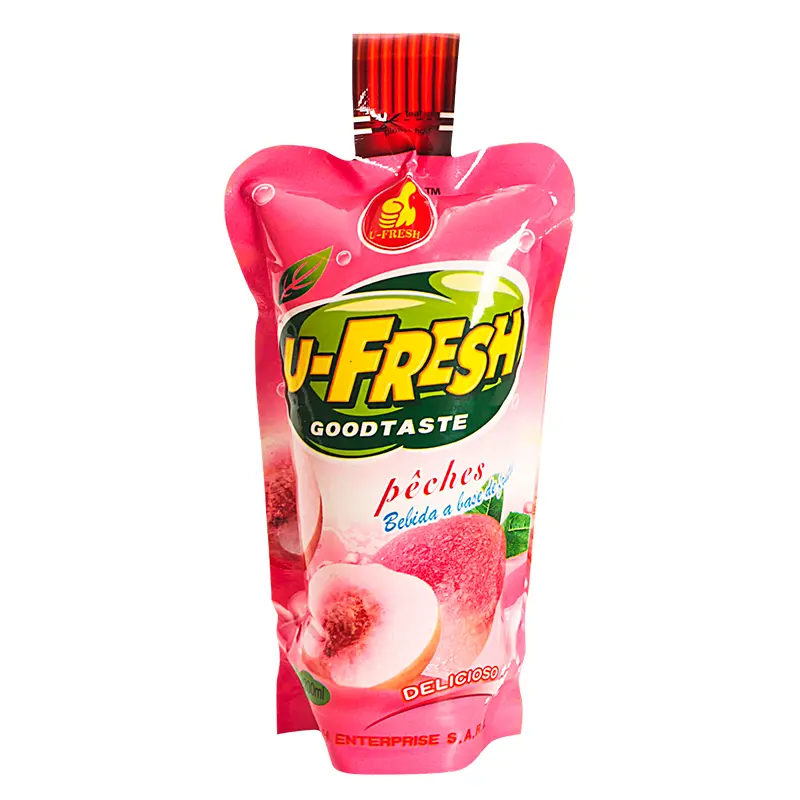The surface finish of a flexible package does more than make a product look good — it affects print reproduction, sealing behavior, line speed, durability, and end-of-life outcomes. For brands and packaging engineers, choosing between matte and high gloss (or a combination of both) must balance visual intent, roll-to-roll and FFS production line processing reality, and recyclability goals.
As a professional custom flexible packaging manufacturer, GQ PACK will elaborate on these trade-offs and provide practical steps for prototyping and validating flexible film applications.
What “Matte” and “Gloss” Mean for Flexible Film
In flexible packaging, surface finish is quantified by gloss units (GU) and visual spec. A gloss finish reflects light and increases perceived color saturation; a matte finish scatters light and reduces specular reflection. On films (BOPP, PET, PE, metallized substrates), these effects are achieved via lamination, aqueous or UV varnishes, soft-touch coatings, or matte films. Importantly, the same finish behaves differently on thin, stretchable substrates than on rigid boards — and that behavior must be proven on actual rollstock.
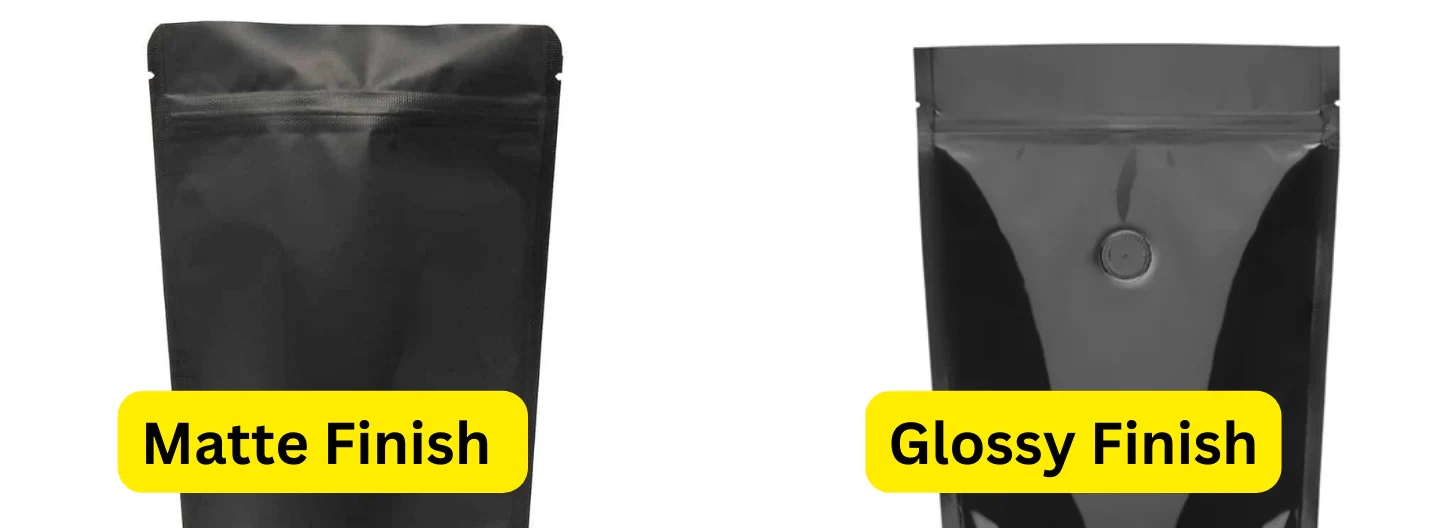
Brand Psychology and Category Fit
As a surface finish, matte conveys understated premium, natural or craft positioning — excellent for organic snacks, artisanal foods and premium personal care. Gloss reads as vivid, colorful, and attention-grabbing; it’s excellent for impulse snacks, drinks, and promotions. A number of brands employ a matte field with spot gloss to attain both premium tactility and targeted pop; on flexible packaging, it requires careful process planning to control misregistration through converting and filling.
Printing and Color Reproduction on Flexible Films
The chosen surface finish significantly alters color perception. Gloss surfaces increase perceived saturation and contrast; matte reduces glare but can mute highlights. For flexible packaging, always proof on the target film + finish (not paper proofs). Digital and flexo proofs should be run using the same overprint varnish or lamination intended for production. Spot-gloss on a matte laminate often needs an extra inline coating station or an offline varnish pass — both add complexity and risk for roll-to-roll registration.
Impact on Heat-seal and Converting Performance
Coatings and laminates that change surface finish also change surface energy and heat transfer. Soft-touch and matte varnishes may lower surface energy, reducing heat-sealability or requiring adjusted seal recipes (higher dwell, pressure, or temperature). On high-speed FFS lines, this can result in more rejects or slower throughput if not validated. Always include heat-seal window tests (hot-tack, peel, burst) after applying the final finish to the film.
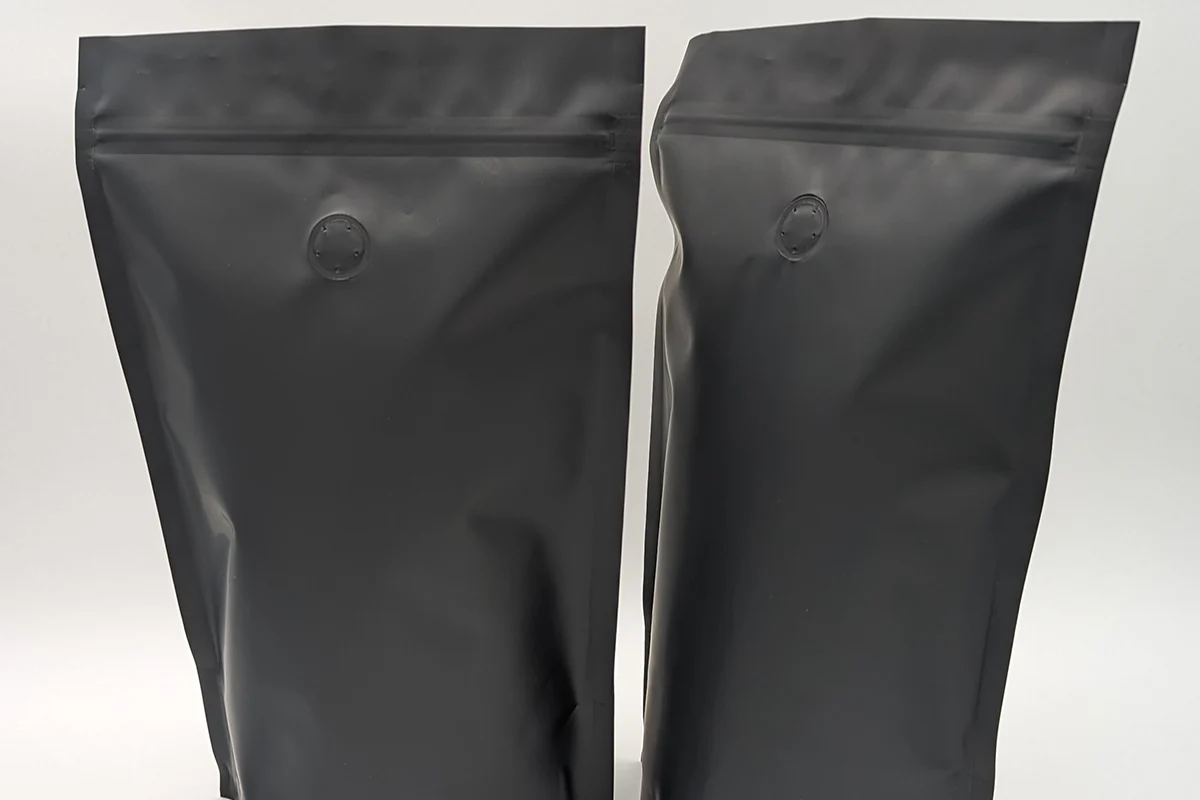
Durability, Abrasion, and Cold-chain Behavior
Gloss films tend to show fingerprints but often resist scuffing better than unprotected matte coatings; matte and soft-touch surfaces hide fingerprints but can scratch more easily. In cold-chain or humid environments, certain matte varnishes may show bloom or change tactile feel. Include abrasion, wet-wipe, and low-temperature handling tests in your QA plan to confirm the chosen surface finish survives warehousing, pallet handling, and retail shelving.
Spot Gloss and Mixed Finishes — Real-world Constraints
Spot gloss looks attractive but is technically demanding on flexible packaging: the web may stretch, causing spot gloss misalignment after laminating or during bag forming. Achieving precise spot-gloss requires stable web tension, accurate register control, and sometimes a post-print varnish station. Evaluate whether the visual gain outweighs the added setup, tooling, and waste during make-ready.
Coating/Lamination Choices and Cost Implications
Common process routes to achieve surface finish on flexible films are: matte lamination film, aqueous matte varnish, UV varnish, and soft-touch coatings. UV or soft-touch offer a premium feel but increase cost and often complicate recycling. Aqueous varnishes and matte films can be more recycling-friendly but may require different curing/drying equipment. Share your target GU and heat-seal constraints with suppliers to get realistic cost and lead-time estimates.
Sustainability and End-of-life Considerations
Coatings used to achieve a surface finish affect recyclability. Mono-material laminates with a matte PE film are typically more recyclable than a PET/foil laminate with a soft-touch coat. If recyclability is a goal, prefer finishes compatible with mono-PE or mono-PET streams and avoid laminates that contaminate the recycling process. Always ask suppliers for MRF acceptance evidence or How2Recycle guidance when claiming recyclability.
Proofing, QA, and Go/No-go Tests
Don’t approve a finish based on visual mockups alone. A production-proof sequence should include: (1) rollstock print + chosen finish, (2) laminated roll mock, (3) converted pouch sample, (4) filled-sample run through FFS, and (5) accelerated transport and shelf-life tests. Measure GU, ΔE color shifts, hot-tack times, seal strength, abrasion resistance, and cold-chain handling outcomes. Use those results to finalize your SOPs and acceptance criteria.
Surface Finish Summary
| Criteria | Matte | Gloss | Spot Gloss |
|---|---|---|---|
| Visual impact | Subdued, premium, low glare | High shelf pop, vivid colors | High focal impact on highlighted elements |
| Tactile / Brand cue | Soft-touch / textured → premium feel | Seal/line compatibility | Matte background + shiny highlights → premium + pop |
| Proofing & registration | Must proof on final film+finish; low registration risk | Standard film proofs; low registration risk | Requires film-level proofing and precise registration control |
| Seal / line compatibility | May reduce surface energy; heat-seal window must be validated | Generally compatible; fewer seal adjustments | Coated spots can affect local seals; validate layout vs seal areas |
| Recyclability & cost | Better if water-based matte on mono film; cost medium–high | Good with mono-material films; cost low–medium | Smooth/slick → energetic, bright |
Conclusion
Choosing the right surface finish for flexible packaging is a cross-functional decision: brand, printing, converting, and sustainability teams must align. Matte, gloss, and hybrid approaches each bring distinct aesthetic and functional consequences; the correct choice is the one validated through targeted prototypes and finished-package testing under real production and distribution conditions.
About GQ Pack

GQ Pack is a custom flexible packaging manufacturer trusted by global brands for export-ready packaging solutions. We provide custom flexible packaging solutions with full OEM and ODM support, ensuring consistency across international markets.
With advanced printing technology and efficient production lines, we deliver high-quality packaging at competitive prices—ideal for brands seeking long-term, reliable partners in flexible packaging manufacturing.
